June 2017 in this area was cooler, wetter, windier and much more changeable than last month, however, there were still enough safari-friendly days of weather for it turn out to be yet another excellent month for wildlife sightings.With around 20 hours of usable daylight and all of our summer visiting bird species now on territory, bird day-lists are almost at their highest in the year now, with full-day (10-12 hour) multi-habitat safaris regularly producing over 50 species - many with youngsters - June is definitely 'fledgling month', whilst mammal day-lists ranged between 5 and 10 species depending on the variety of habitats visited, with early starts, as usual, proving to be most productive.
The combination of sun and rain helped to maintain the lush, green appearance of the spectacular highland scenery, the wild flowers are approaching their colourful best now, a few patches of purple heather began to appear on south-facing banks, and a few more butterfly species and bees were noted on the sunnier days, though sadly, in smaller numbers than I would usually expect.
 |
| Early morning on a Cairngorm moorland |
To give you an idea of what you may realistically hope to see if you are planning a future June visit, I hope the following more detailed information, illustrated with photos taken at sites in and around the Cairngorms National Park by myself, my friends or my safari clients, will help....clicking on the picture enlarges it to full-screen.
Local speciality and upland bird species seen regularly this month included:
Osprey, Slavonian Grebe, Ring Ouzel, Red Grouse, Red-Throated Diver, Black-Throated Diver, Goldeneye, Dipper, Crested Tit and Scottish Crossbill, with just a few views of Golden Eagle ...whilst an adventure high up into the Cairngorms, produced the classic 'mountain-top' species - Ptarmigan, Dotterel and Snow Bunting.......and an 'out of area' coastal trip produced all the classic 'seabird city' species....it should be noted though, that we (not unusually) failed to see Black Grouse or Capercaillie at all this month....
Mammals seen regularly on my safaris during the month included:
Rabbit, Brown Hare, Mountain Hare, Red Squirrel, Roe Deer, Red Deer, Reindeer and Mountain Goat , we also managed just a couple of brief views of Stoat and Bank Vole, an unusual sighting of a Brown Rat swimming across the River Spey, one look at Sika Deer and a brief, tantalising glimpse of a probable Scottish Wildcat....Whilst a couple of 'out of area' coastal trips also produced Dolphins and Seals....
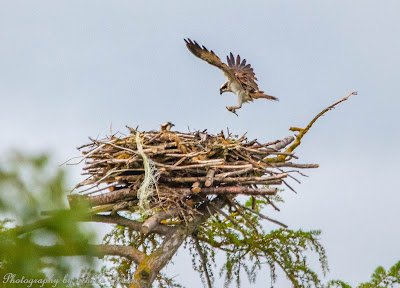 |
| Osprey by Sheila Ivison |
Osprey is probably the 'star bird' of the mid-summer months up here - with my safari parties being fortunate enough to see them plunge-diving spectacularly to catch a fish,or deliver a fish to the nest on several occasions, and from the third week of the month we began to see the rapidly growing youngsters in the nests for the first time this year....
 |
| Slavonian Grebe by Brian Ivison |
Slavonian Grebes, in their beautiful summer plumage, were seen and enjoyed regularly by my safari parties on their favoured quiet lochans, though with the female birds still apparently on their nests, we were as yet unable to confirm any much-needed breeding success for this increasingly scarce species..... but hopefully that will change soon...
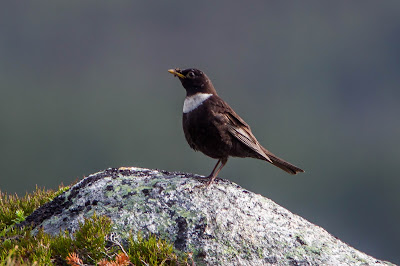 |
| Ring Ouzel by Colin Mount |
Ring Ouzels often showed well in upland habitats near their nesting and feeding areas early in the month but became noticeably more elusive as the month progressed as they and their recently-fledged young began to roam further afield....
 |
| Female Red Grouse by Jan Shields |
Red Grouse were not too difficult to find in suitable areas of heather moorland, despite their impressive camouflage, and if you could spot the heads of the adults above the dense heather, and looked carefully, you then usually got to see their large families of very cute, fast-growing youngsters too...
 |
| Black-Throated Diver by Steve Nicklin |
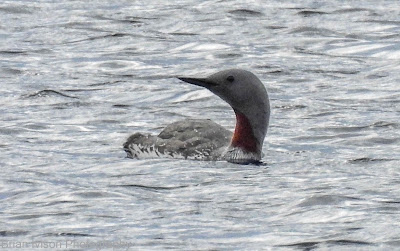 |
| Red-Throated Diver by Brian Ivison |
Both Red-Throated Divers and Black-Throated Divers in their striking summer plumage, were seen reasonably regularly on suitable secluded local lochs, though we generally had our best views on calmer days, with little or no ripple on the water, and had our closest encounters early and late in the day, when human disturbance was it it's lowest....but sadly, we did not see any evidence of local breeding success.......
 |
| Crested Tit by Byron Taylor |
Crested Tit (finally!!!) became a little less difficult to see, as the recently-fledged youngsters learned to forage for food with their parents in family groups, often alerting us to their presence in the Caledonian pine forests with their distinctive chuckling trills....so you need to be able to recognise this to have a decent chance....
 |
| Male Scottish Crossbill by Steve Nicklin |
The same could be said of Scottish Crossbills, usually one of the more tricky species to see well, but by listening out for their trademark 'jip jip' calls and for falling pine cones....we actually managed decent sightings on a good number of occasions.....
 |
| Recently fledged Dipper |
Dippers featured frequently on my safaris this month, with our local rivers producing great close-up views of families of these characterful and endearing little birds, that always prove to be popular with my clients, many of whom do not have them on or near their local patch.....
Golden Eagle is usually a tricky bird to see in the summer months, as they have so many hours of daylight in which to hunt, and the females are busy raising still-dependent youngsters...but regular visits to suitable upland habitat , and constant scanning, provided us with some pretty decent (If usually distant) views this month, though none were close enough for photos....
Other birds of prey seen at least once on my safaris this month included Common Buzzard, Kestrel, Peregrine, Sparrowhawk and Red Kite .....
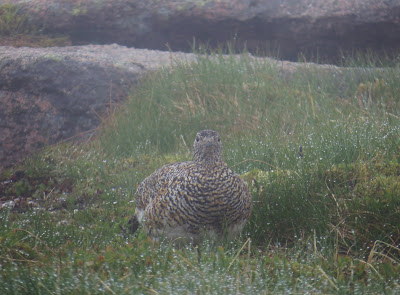 |
| Ptarmigan |
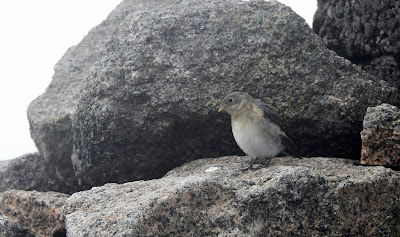 |
| Snow Bunting |
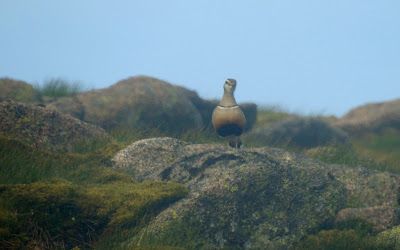 |
| Dotterel |
June is probably the best month to have a chance of seeing all 3 of our mountain top bird species, and although suitable days weather-wise were a bit limited this month, a walk up and around Cairngorm summit on the 28th - using my Cairngorm Mountain Birdwatching Guide qualification to allow us to use the funicular railway and then exit the (usually) closed system for a walk up to the summit, gave us decent views of Ptarmigan , Dotterel and Snow Bunting ...though the poor weather meant my pictures were not of great quality....
 |
| Guillemots |
 |
| Razorbills |
 |
| Puffin |
June is also probably the best month in which to visit a coastal seabird colony, so taking advantage of a favourable weather forecast, the 24th saw us take a very scenic drive east across to the Aberdeenshire coast to the sea cliffs at
RSPB Fowlsheugh. After a short walk past fields full of singing
Yellowhammers,
Skylarks and
Linnets, we reached the impressively high and wonderfully scenic cliffs and were treated to the unique sights, sounds (and smells!) of good numbers of
Fulmars,
Kittiwakes,
Razorbills,
Guillemots (including the 'bridled' variety),
Gannets and yes, everybody's favourite -
Puffins!
 |
| Woodchat Shrike |
 |
| Spotted Flycatcher by Colin Mount |
 |
| Pied Flycatcher |
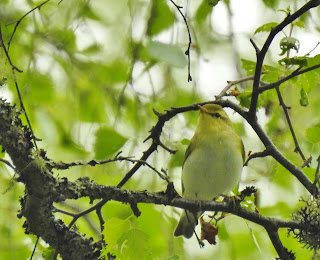 |
| Wood Warbler |
Other good birds of note seen locally this month included Cuckoo, Golden Plover, Redstart, Spotted Flycatcher, Pied Flycatcher and Wood Warbler all of which can now be tricky to see in large parts of the UK.... and we also had a short visit from a very rare Woodchat Shrike.....
Onto mammals now...
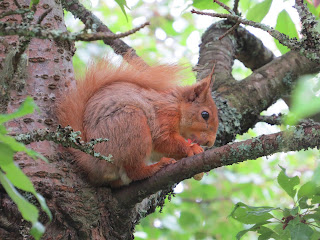 |
| Red Squirrel |
Our local Red Squirrels, a species sadly absent from most of the UK now, are always popular with my safari clients - often getting voted as 'mammal of the day', and visits to my favourite Caledonian pine forests produced lots of good sightings, often with decent photographic opportunities...
 |
| Red Deer |
Red Deer too are not common in much of the UK, but we are fortunate to have good numbers here in our local glens , and we had many decent views of them again this month....
 |
| Feral Mountain Goat |
The same could also be said of our feral Mountain Goats, which many of my safari clients saw in the wild for the first time whilst out on safari with me...
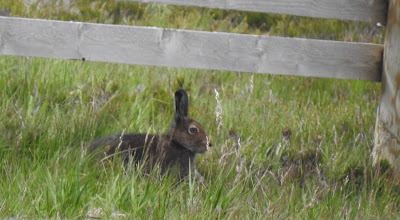 |
| Mountain Hare in summer coat |
Mountain Hares too are largely restricted to remote upland areas, and although we had a few decent views this month, they were generally a bit tricky to see....
 |
| Brown Hare |
Brown Hares however, were seen much more frequently, especially early in the day, and occasionally at surprisingly close range, for this normally quite wary species....
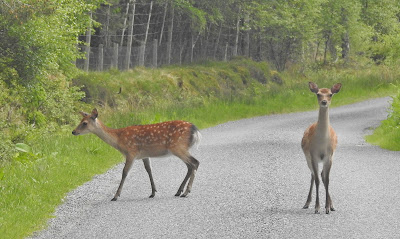 |
| Sika Deer |
Sika Deer, an introduced species from it's native range in Asia in the late 19th century now have established feral populations in a number of locations, and we had a decent sighting of two of these very attractive animals early in the month...
So, despite the unseasonal weather, it would appear that June 2017 was yet another great month for wildlife-watching in the Cairngorms National park. If you can accept that you are unlikely to see Capercaillie or Black Grouse, then June is an excellent time to visit if you are happy to see a wide selection of birds and mammals, with no need for a really early start, and also fancy a mountain-top adventure, or a trip to a seabird colony with (usually) fairly good weather, and all in virtually constant daylight.....
If you think you know someone who may enjoy a taste of what I do, why not treat them to a safari gift certificate. They make a thoughtful and imaginative present and are available for any amount in multiples of £10, and are valid at any time within a year from date of purchase....
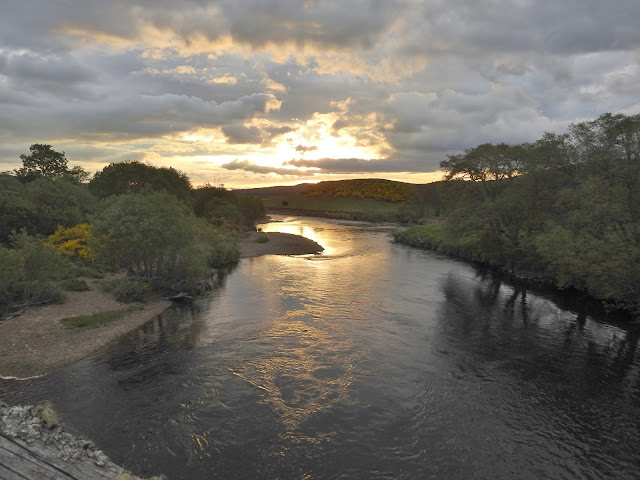 |
| Sunrise over the River Spey |













No comments:
Post a Comment